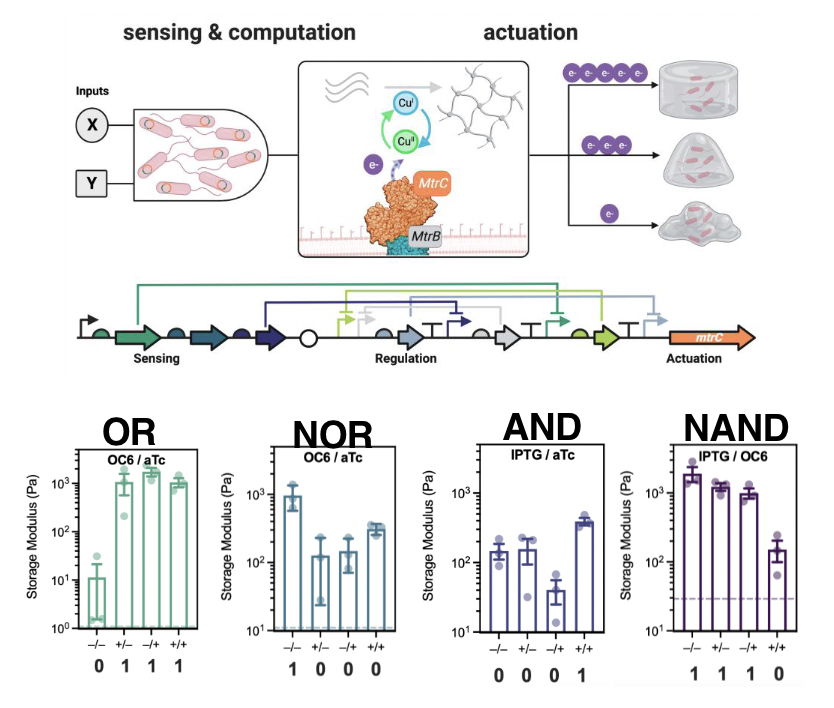 Living polymer networks, including tissues andbiofilms, actively respond to complex combinations ofenvironmental inputs, leading to differentiation,regeneration, and development. Synthetic materials aregenerally not capable of these complex computationalabilities. We used extracellular electron transfer (EET), ananaerobic form of microbial respiration, to address thischallenge. In our system, embedded bacteria sensechemical inputs (IPTG, aTc, OC6), compute an appropriateresponse according to genetically engineered logic, andactivate radical polymerization – resulting in the formation ofa hydrogel. This process allows chemically simplehydrogels to form in response to Boolean combinations ofchemical inputs. We also demonstrated that these bacteriacan activate alternate redox chemistries, such as ‘Clickchemistry’, using the same genetic logic.
Living polymer networks, including tissues andbiofilms, actively respond to complex combinations ofenvironmental inputs, leading to differentiation,regeneration, and development. Synthetic materials aregenerally not capable of these complex computationalabilities. We used extracellular electron transfer (EET), ananaerobic form of microbial respiration, to address thischallenge. In our system, embedded bacteria sensechemical inputs (IPTG, aTc, OC6), compute an appropriateresponse according to genetically engineered logic, andactivate radical polymerization – resulting in the formation ofa hydrogel. This process allows chemically simplehydrogels to form in response to Boolean combinations ofchemical inputs. We also demonstrated that these bacteriacan activate alternate redox chemistries, such as ‘Clickchemistry’, using the same genetic logic.
Our work is significant because it establishes afoundation for applying the transcriptional regulatory motifsfound in patterning, embryogenesis, and tissue formationtoward the control of a wide range of synthetic polymernetworks.